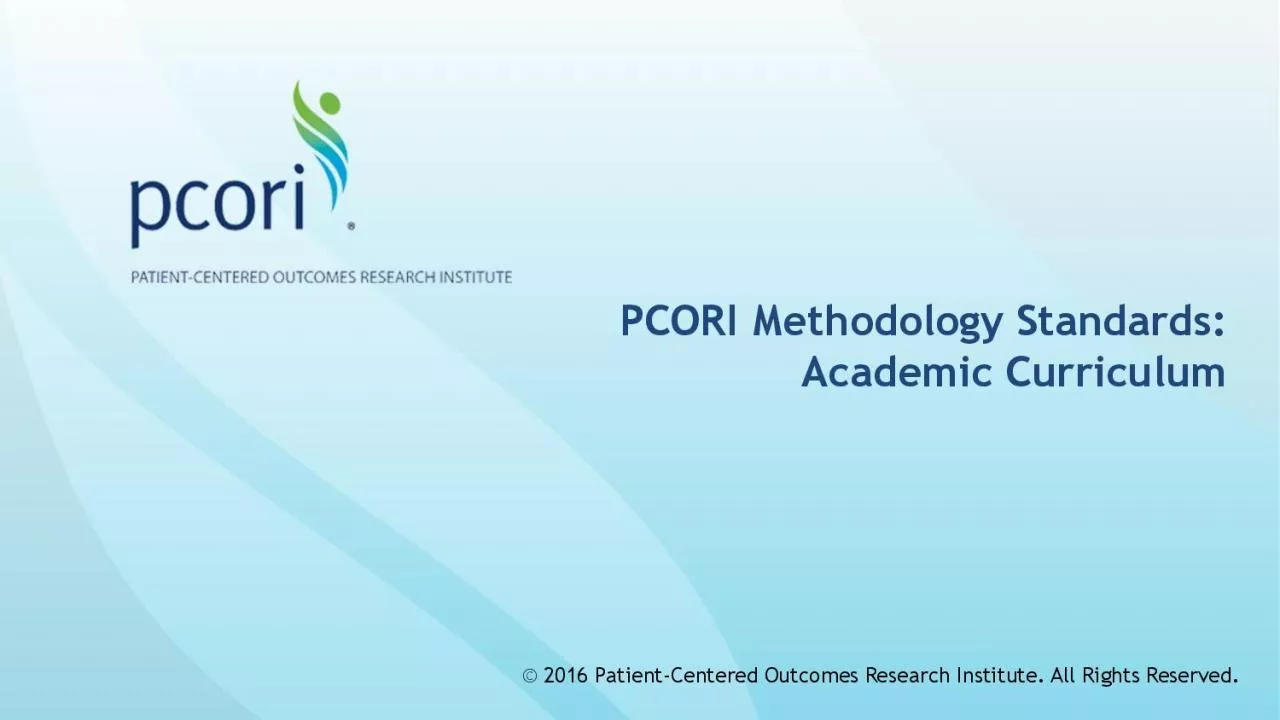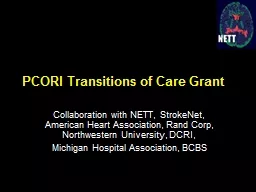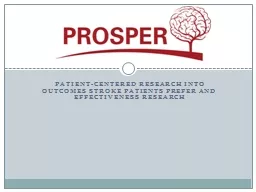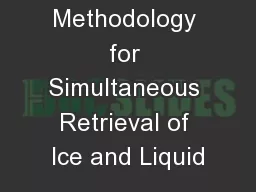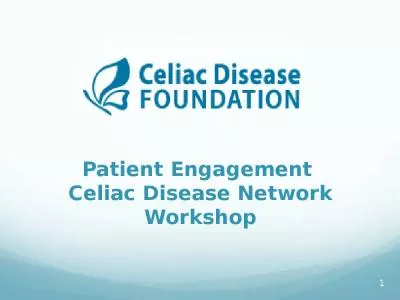PDF-PCORI Methodology Standards
Author : rose | Published Date : 2021-09-30
Academic Curriculum 2016 PatientCentered Outcomes Research Institute All Rights ReservedPrepared by NajJoSegaPresented by Najila Nassery MD Module 3 Study Designs
Presentation Embed Code
Download Presentation
Download Presentation The PPT/PDF document "PCORI Methodology Standards" is the property of its rightful owner. Permission is granted to download and print the materials on this website for personal, non-commercial use only, and to display it on your personal computer provided you do not modify the materials and that you retain all copyright notices contained in the materials. By downloading content from our website, you accept the terms of this agreement.
PCORI Methodology Standards: Transcript
Download Rules Of Document
"PCORI Methodology Standards"The content belongs to its owner. You may download and print it for personal use, without modification, and keep all copyright notices. By downloading, you agree to these terms.
Related Documents

